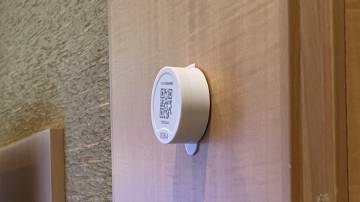The world of event attendance tracking - RFID and its alternatives

Event managers and planners know that tracking attendance is an essential part of ensuring the success of any gathering. From conferences to trade shows, the ability to keep accurate records of who’s attending your event is crucial. In this guide, we will explore various methods and software for event attendance tracking, with a particular focus on RFID technology and its alternatives.
The basics: Traditional methods
Paper sign-in sheets: The age-old solution
One of the simplest ways to track attendance for an event is by using paper sign-in sheets. Attendees manually sign their names, which are later tallied to determine turnout. This method is straightforward but can be time-consuming, especially for larger events.
Manual counting: An eye on attendees
For smaller events or specific sessions, manual counting of attendees is a cost-effective approach. However, it’s prone to human error, making it less suitable for larger gatherings. Whilst this method will produce a count, it won’t stretch to providing a named list, showing which delegates attended.
Embracing the digital age: Mobile apps, near field communication (NFC) and QR codes
Mobile apps for event attendance tracking
With the rise of smartphones, a range of different mobile apps for event attendance tracking have emerged. These apps offer real-time data collection, which makes attendance management much easier to manage. For a number of years now, attendees have been able to conveniently check in using their mobile devices. A key additional technology is Near Field Communication, a type of RFID which works either within or outside of the app itself.
NFC - The future of check-ins
With Near Field Communications (NFC) the devices themselves provide a means of tracking that almost hides in plain sight, such is its adoption in everyday life outside of events. Payments and access control on public transport for example, are common applications.
NFC in the phone
This technology enables users to make secure transactions, exchange digital content, and connect electronic devices with a single touch of their handset. NFC transmissions are short range (from a touch to a few centimetres) and require the devices to be in close proximity.
NFC in the badge
Otherwise known as an RFID Smart Badge, the badge contains an NFC chip and speeds up the registration process. Again enabling the user to check in with a single touch.
QR code attendance tracking: Scanning for efficiency
QR codes have become a popular choice for tracking attendance at events. Attendees simply scan QR codes using their smartphones, streamlining the registration process. Although not quite as easily to use as NFC, QR code attendance tracking is a cost-effective and user-friendly alternative.
Advanced solutions: RFID technology and its alternatives
The advanced nature of these solutions stems from the fact no tap in is required with either badge or phone. The process is entirely invisible to the delegate.
RFID tracking: Real-time and relatively reliable
RFID (Radio-Frequency Identification) technology has revolutionized event attendance tracking. Attendees are provided with RFID-enabled badges, and RFID readers are strategically placed at key entry points. This technology offers real-time tracking, in-depth attendance data, and access control features. It’s become a favorite for large conferences and trade shows, given the high costs normally associated with deployment
Alternatives to RFID: Choices to consider
While RFID technology is effective, it may not be suitable for every event due to cost. Cheaper alternatives include QR code tracking, mobile apps, and even NFC (Near Field Communication) technology. Hardware based solutions such as Crowd Connected’s own attendee tracking solution are now also making waves in the market. These alternatives can still provide efficient attendance tracking without the RFID price tag and often with a much lighter installation process and greater data accuracy.
Data is king: Collecting and analyzing attendance data
When it comes to attendance tracking, it’s not just about collecting data – it’s about making sense of it. By using the right tools, event planners can access real-time data, streamline access control, and gain valuable insights.
The future of event attendance tracking is low cost and easy installation
With the technology becoming ever more accessible, RFID is no longer the only solution for a seamless attendee tracking at your event. Many event organizers are now favoring lighter installation processes with reduced need for registration staff. This in turn translates to fewer barriers for delegates and greater accuracy and immediacy of the data outputs. Making the right choice for your event
Before deciding on a method of attendance tracking, event planners should consider factors such as the type of event, budget, and expected turnout. Additionally, requesting a demo of attendance tracking software can help evaluate its features and user-friendliness.
In conclusion
Efficient event attendance tracking is the cornerstone of successful events. Whether you choose traditional methods, QR codes, mobile apps, RFID technology, or its hardware based alternatives, the ultimate goal is to ensure accurate attendance data, streamline access control, and enhance the event experience.
Other things to consider are:
- Knowing who the attendee is as well as the fact they were in the room.
- How much time did they spend at the session in question?
- How readily does the organizer require the information provided, to run the event or share with sponsors?
As the event management industry evolves, staying informed about the latest tracking methods is crucial for event managers looking to save time, make data-driven decisions, and create memorable event experiences for their attendees.


